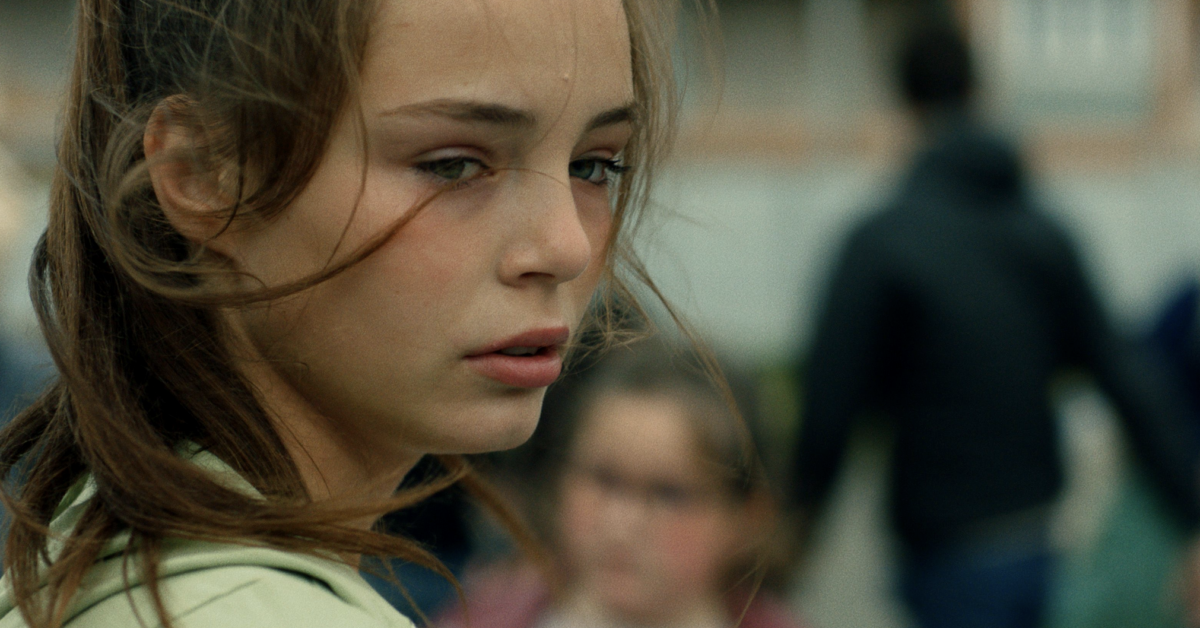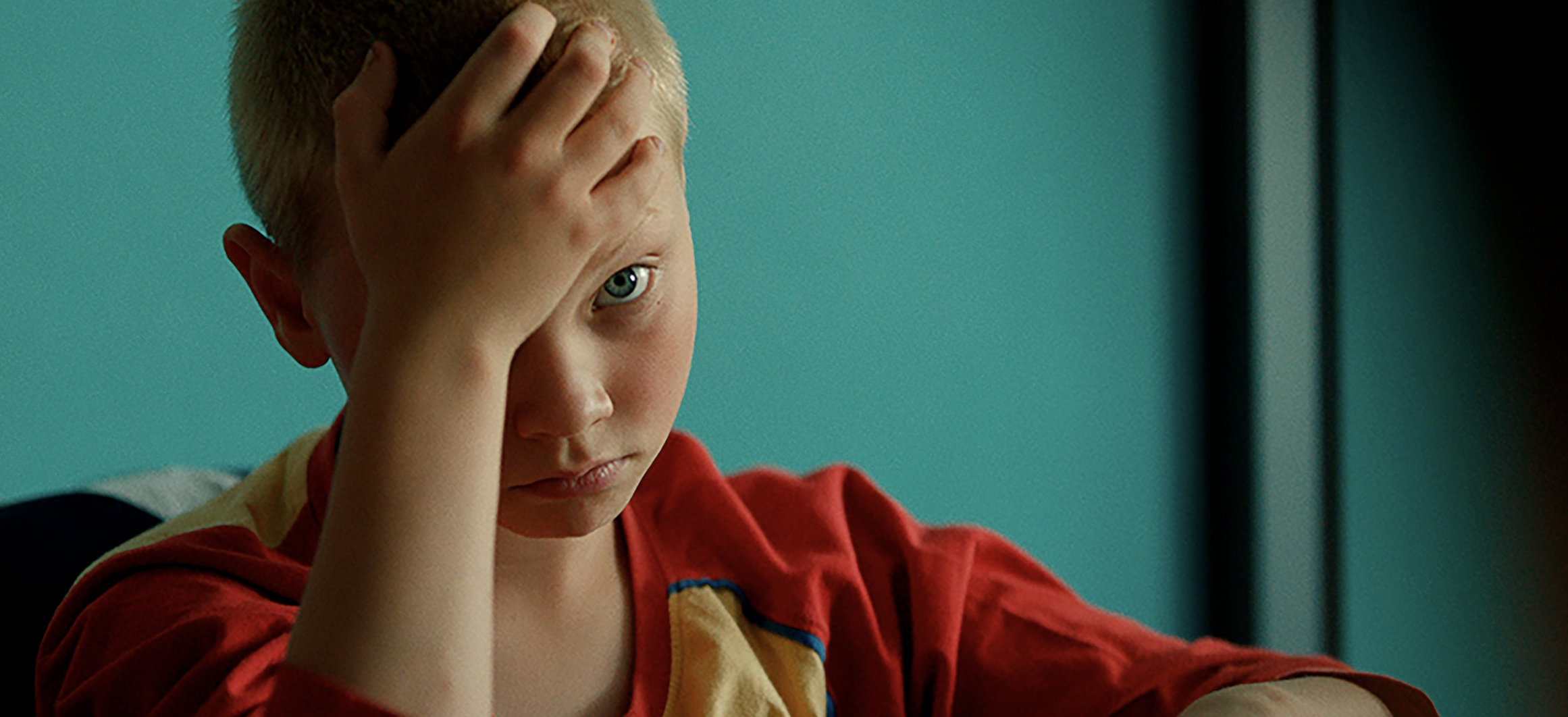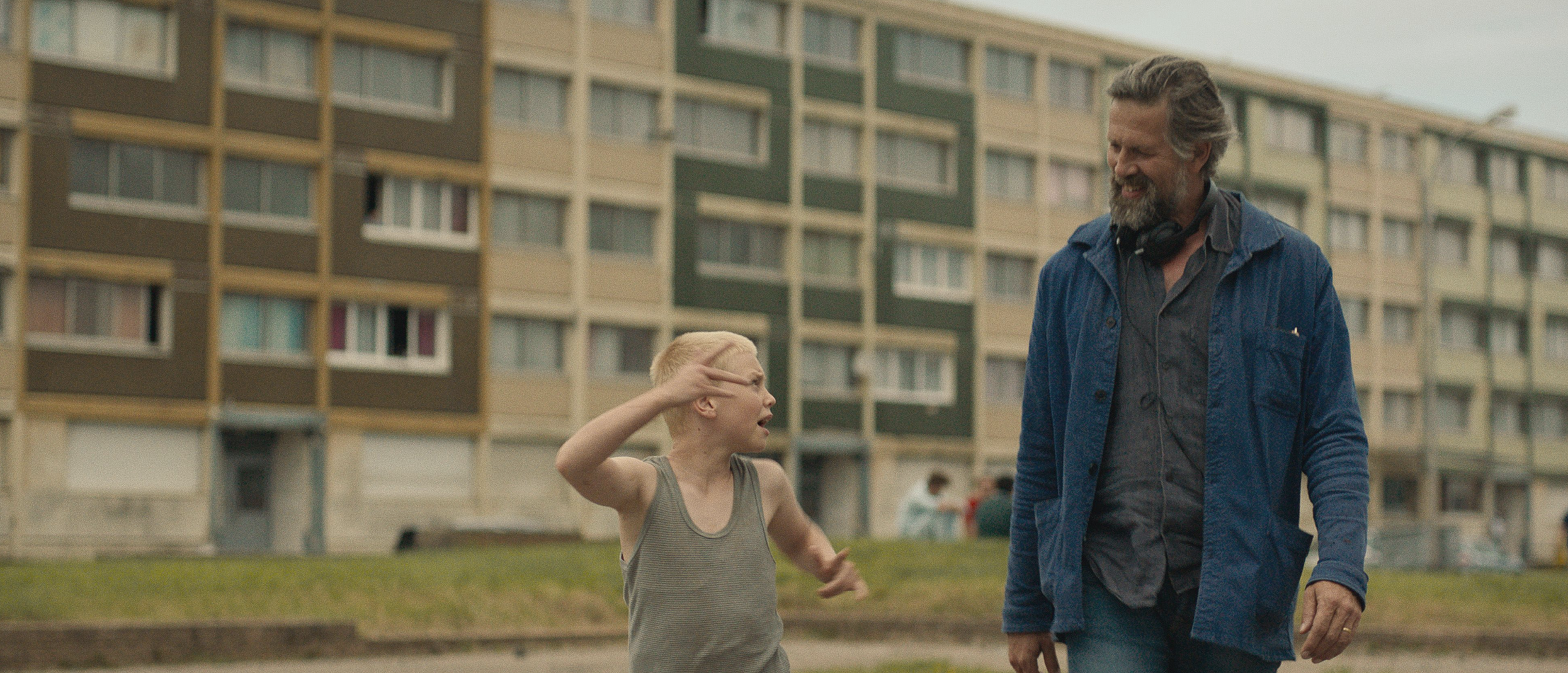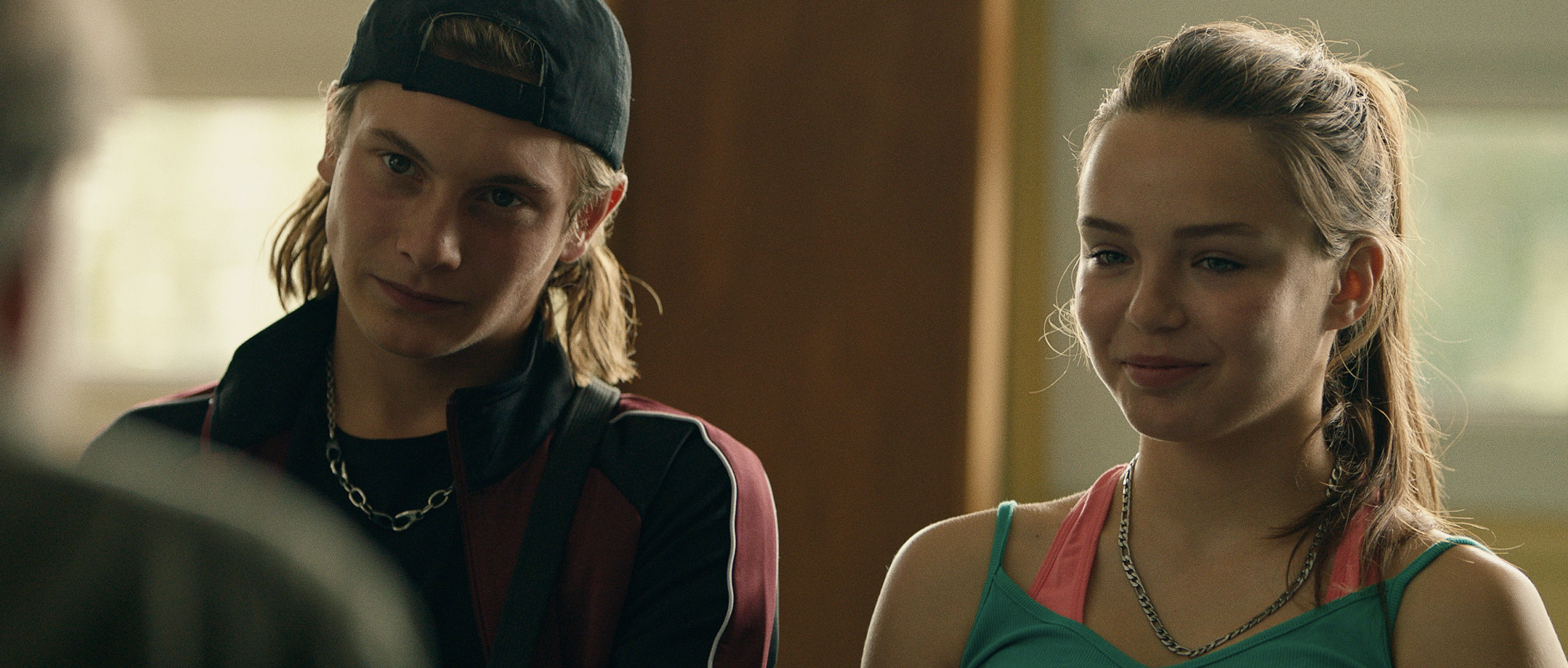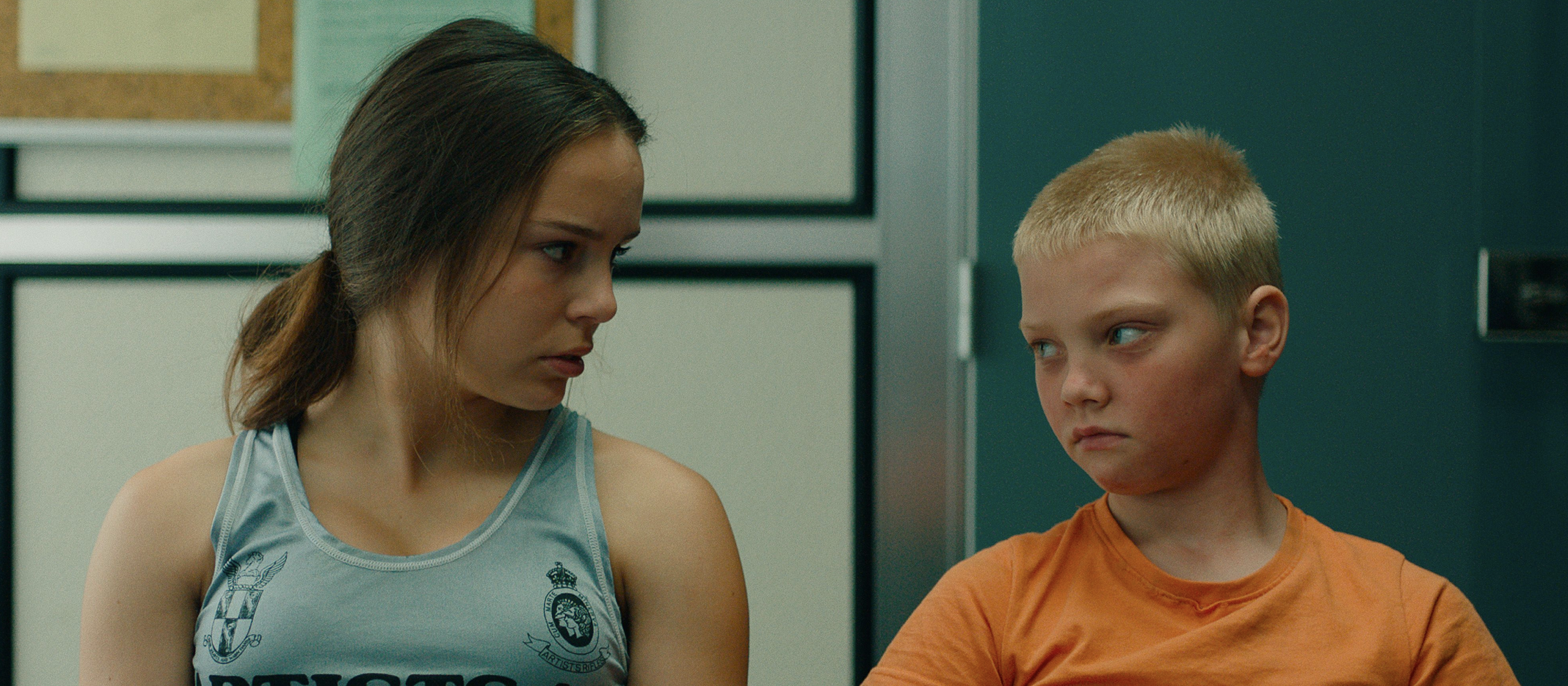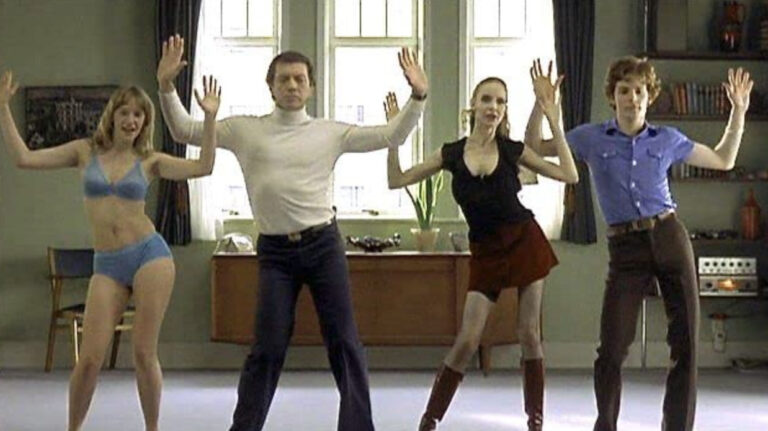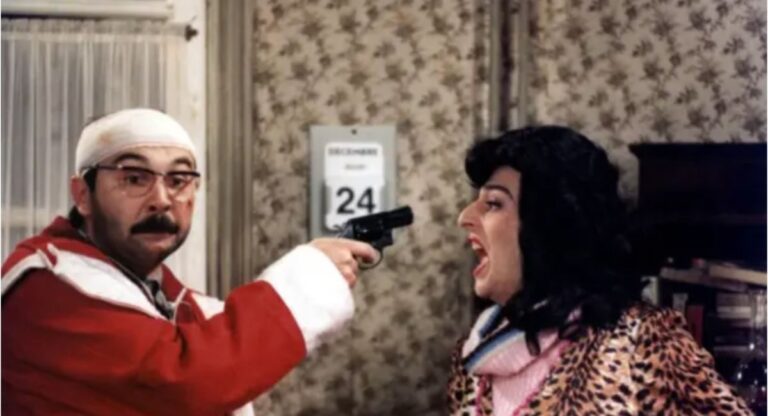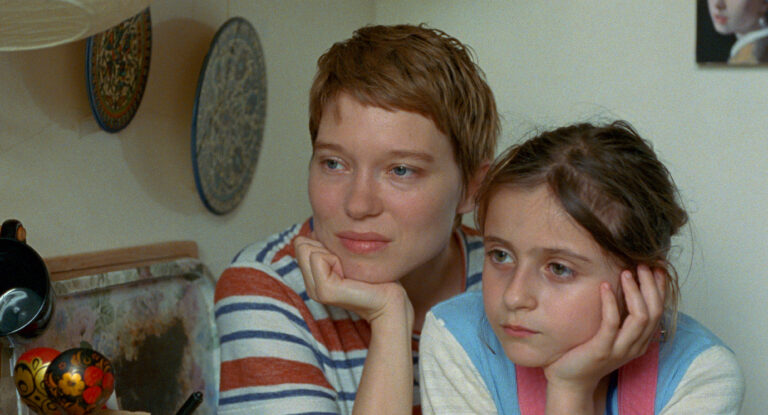Hoping to capture the gritty reality of a working-class town in Northern France, director Gabriel (Johan Heldenbergh) and his scrappy crew decide to cast kids from a local housing project to star in their film. Some of the locals whine that the actors—Ryan (Timéo Mahaut), known for his family issues and hot temper, Lily (Mallory Wanecque), labeled a slut by the other girls, and Jessy (Loïc Pech), fresh off a stint in juvenile detention—are deadbeats, “the worst ones,” who will earn the town a bad reputation in the eyes of the moviegoing public. But it turns out that privileged big city artists and disadvantaged children have a lot to learn from each other. Over the course of the film, minds are changed, assumptions are dropped, and unexpected connections forged.
Before making their feature debut with The Worst Ones (winner of the Grand Prix in the Un Certain Regard section of the 2022 Cannes Film Festival), directors Lise Akoka and Romane Gueret won the award for best short film at Cannes for Chasse Royale, also about casting local kids for a movie shooting in a working-class Northern town. (That film stars Angélique Gernez, who plays Ryan’s sister Mélodie in The Worst Ones.) Both Akoka and Geuret worked in casting prior to making the leap into directing. Their new film introduces a stunning cast of kids acting for the first time, who bring their beautiful faces and, yes, some gritty reality to a story of worlds colliding with surprising and moving results. I talked to Akoka and Gueret about their process, their knack for casting, and the ethics of making movies starring real people playing fictional versions of people with backgrounds and circumstances similar to their own.
What made you want to make films about kids growing up in the Cité Picasso housing project in the suburbs of Boulogne-Sur-Mer?
Romane Gueret: We fell in love with the region when we made Chasse Royal. In the short, we questioned the practice of street casting, in which the casting directors weave themselves into the lives of these kids who have not asked to be involved in a movie. It offers the actors a real experience and can also have unexpected repercussions. This feature elaborates on the issues that informed Chasse Royal. So, we started off again with another round of street casting and decided to work with these four kids.
Your actors are so talented, notably Mallory Wanecque, who plays Lily, and Timéo Mahaut, who plays Ryan. What was your casting process like?
Lise Akoka: It was a process that went on for a really long time, almost a year and a half altogether. We saw around 800 children and held auditions in a lot of different towns all over the north of France. We were deeply involved in the casting process, because that’s our background.
In the film, the actors’ lives overlap with the lives of the characters they play. Ryan, living with his sister, for example. Was your script based on the actual lives of your cast?
Gueret: No. In fact, the script was written four years before we cast the film. That process began with a long immersive period, where we met about 100 kids and adults and interviewed them. Afterwards, we transcribed all these interviews, which was a pretty laborious process, and that helped us shape our characters. The script and characters that emerged were the sum of many different stories we heard. Actually, it’s important that the young actors have some distance from the stories we’re telling so they really own their character and focus on the work. We don’t want the line between acting and their real life to be blurred.
The director in the film, Gabriel, can sometimes be inappropriate with the actors and sometimes push the kids too far, yet he also shows genuine affection for them. What are we supposed to think of him? Is he a good filmmaker?
Akoka: We don’t want the viewer to perceive him as a horrible filmmaker making a horrible film. We want people to think his film might end up being really beautiful. Gabriel creates something special, but sometimes he crosses the line to reach his goals. The device of the film within the film allows us to include ourselves in the criticism that people might have of directors making this type of film. We’re implicating ourselves. Gabriel is a sort of lightning rod, an amplification or caricature, who does and says the types of things we’ve seen in our profession. He provides a way for us to pose questions and explore ethical issues that emerge.
I love the scene where Gabriel interviews Lily and Jessy in character about their relationship. What does the scene tell us about Lily and Jessy, and about Gabriel?
Gueret: It’s one of the rare scenes where we see Gabriel while he’s working. He shows a sweet, intelligent side, and he opens up and confides in the kids about his own life. The scene also shows us what a good actress Lily is. She feels completely at ease in this situation. She has a real talent for acting and feels things instinctively, while it’s more challenging for Jessy. We also see that he is possibly starting to have feelings for her. It’s a scene we really like. There’s so much going on between the characters, and all the emotion that emerges comes through the process of acting. It shows that acting can create moments of true magic.
One of my favorite lines is when Ryan says, “It’s like my body’s shaking all the time.” Did any of the dialogue come directly from the actors?
Akoka: The dialogue doesn’t come directly from the actors, but to some extent it does come from the children who inspired the film. The dialogue was scripted, but occasionally the actors would say, ‘This line doesn’t sound like something I’d say,’ and we would change it. Of course, the actors all have something in common with their characters and that’s partially why we chose them. The dialogue was credible in their mouths. That line in particular came from a forum we attended on hyperactive children around the same age as Ryan, since he’s a character who struggles with ADHD. The parent of one of these children said that line. It was something his child had said, and it struck us as very beautiful.
Ryan calms down in the presence of the pigeons. What inspired you to use them in this scene?
Gueret: Pigeon-keeping is a tradition in Northern France and we wanted to include that folklore and pay tribute to that passion. The nightmare scene was important, because it’s the kind of scene that tends to be used a lot in social commentary films. It allows us to show what’s going on in the character’s mind. The scene also allows us to see Ryan for the first time being accepted by the residents of the town. He appears before them naked, looking down at them. He proves himself to all the residents of Picasso and shows them he’s capable of pulling off this complicated scene. It’s an important moment in the story and between Gabriel and Ryan.
Was part of your goal to reveal stereotypes and expose them as being reductive?
Akoka: In a way, yes, and, at the same time, the film interrogates the way we create and reinforce these stereotypes. Does making this kind of film do any good for the neighborhood or these kids? Does it shine a light on the kind of lives they live or, on the contrary, does it accentuate and reinforce the stereotypes? It’s an issue we want to tackle, but we leave the question open. We wanted to create a collaborative relationship and integrate the locals into the process of making the movie.
What’s next for you two?
Gueret: We’re working on adapting a web series that we directed during the writing stage of The Worst Ones, and we’re turning it into a feature film. It’s a coming-of-age story about four young kids, a group of friends, that takes on the passage from childhood to adulthood and the challenges they face.
THE WORST ONES (Les Pires), opens theatrically in New York on March 24 and in LA on April 7, with additional cities to follow.
Andrea Meyer has written creative treatments for commercial directors, a sex & the movies column for IFC, and a horror screenplay for MGM. Her first novel, Room for Love (St. Martin’s Press) is a romantic comedy based on an article she wrote for the New York Post, for which she pretended to look for a roommate as a ploy to meet men. A long-time film and entertainment journalist and former indieWIRE editor, Andrea has interviewed more actors and directors than she can remember. Her articles and essays have appeared in such publications as Elle, Glamour, Variety, Time Out NY, and the Boston Globe.

